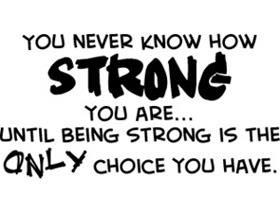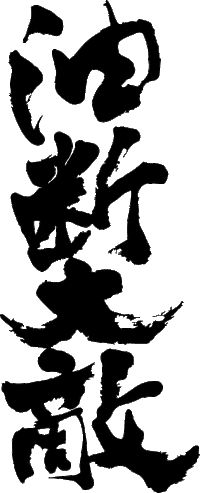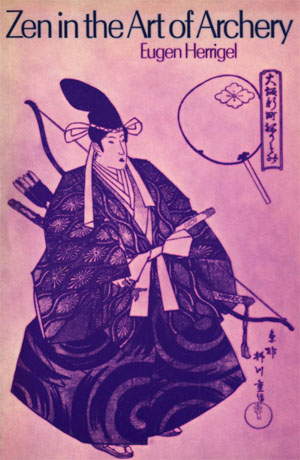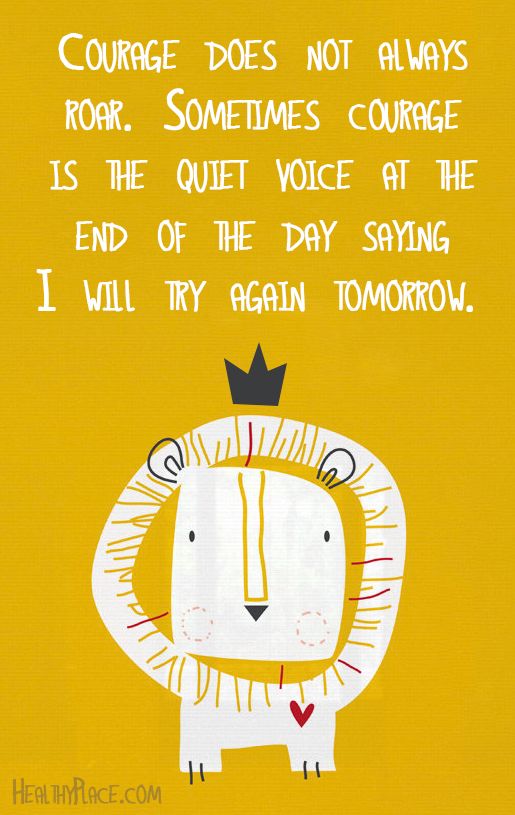A student of Sensei's from the "good old days" emailed this to me. It is an article that Chiba Sensei wrote that Sensei translated back in the 80s. I found it a very good explanation of O Sensei's masakatsu agatsu katsuhayabi theory. Let this be your guide in your Aikido training.
SANSHO
by TK Chiba Shihan (Translation: Daniel M. Furuya)
“Sansho,” the name we finally decided on for our newsletter, is taken from the “three victories” found in Masakatsu, Agatsu, and Katsuhayabi, the three principles of Aikido training which the Founder was fond of using when he was alive. Masakatsu Agatsu Katsuhayabi is the name of a god identified in the Kojiki, (Records of Ancient Matters, 8th Century). The original name was Masakatsu-Agatsu-Katsuhayabi Amenooshiomino-mikoto. The following is an explanation of the meaning of these three terms as they are used in Aikido training.
Masakatsu
Masakatsu means the victory which comes from the correct method; that is, the law of universal creative evolution which transcends the boundaries of prejudice and discrimination and abandons the consciousness of the ego. It is victory through the unification of the love of the Creator. It is not an earthly victory, but a spiritual one, as shown in Matthew 6:19-21: “Do not horde any treasure for yourself on this earth which can be devoured by worms, corrupted by rust, or stolen by robbers. Rather, for your own sake, keep your treasure in Heaven where no worms will eat it, nor rust corrode it, nor robbers steal it. Where your treasure is, your heart is.”
Let us also consider the Founder’s words:
“There is no enemy in real budo. Real budo is the operation of love. It is the operation of creative evolution which gives life to and nurtures all things. Aikido is not winning and losing by fighting with martial techniques.”
“Real budo means absolutely no defeat. Absolute non-defeatism means that there is no conflict with anyone or anything. Thus, Aikido is not training to become stronger or to throw down your opponent. It is necessary to have a mind which unifies itself with the center of the universe and somehow helps a little to bring about peace in the world.”
“Aikido is a compass which directs the completion of the mission of each person who is part of the body and soul of God. It is the way of loving protection of all creation.”
In his book, “My Life and Thoughts,” Dr. Albert Schweitzer explained his concept of life in the chapter, “Reverence Toward Life: ” “There are two experiences which throw a shadow over my life. One is my observation that this world is difficult to explain, full of mystery, and abounding with suffering. And the other is that this present age is a period of spiritual decay of the human race. This is my opinion. But, as for these two points, I have concluded in my studies that there is an affirmation of life and a world of reason as in ‘reverence toward life.’ Within these thoughts, my life has found a solid foundation and direction….”
“The world is not only shape and form, but life itself. Toward life in this world within the limitations of my contact, I am not only passive, but I must perform actively. By serving where there is life, I achieve deeds which are meaningful in this world…”
“Regarding the principle of ‘reverence toward life,’ one must realistically present and realistically solve the problem of how to bring mankind together in this world. As for what mankind knows of this world, all living things express a will to life just as himself. The method to unite a man of active existence and the world is for him not to live for himself, but to regard himself and all creation that comes in contact with him as one body. He experiences this destiny within himself and gives all the assistance he can to others. Thus, when one advances the life of another and gives assistance with one’s own power, one feels the taste of the utmost happiness within one’s self.”
To experience victory based on correct method of reasoning is to transcend from what the mid-l7th century sword master, Harigaya Sekiun, called animalistic warfare, meaning “to win over lesser opponents, lose to stronger ones, and draw against equals.” “Nothing was decisive.” Therefore, it could be said that this method is not the way of the sword used by human beings, but identical to the struggles among tigers and wolves.
Simply put, instinctive passive animals cannot place themselves higher and avoid facing other animals. Therefore, at any time and place, they can eat or be eaten, and the only way to survive is to eat the others. As long as you live in this kind of world, no matter how proud you are of your strength, you must perpetually live in uncertainty and uneasiness. It is impossible to find a safe haven.
When an older Miyamoto Musashi looked back at the early half of his life, he confessed that the more than sixty victories he won by the age of thirty were either the result of his opponent’s inferiority, his own luck, or both. There were no true victories due to accomplished swordsmanship.
Agatsu
Agatsu means to have victory over one’s self. An understanding of Masakatsu as a preface and foundation is necessary for explaining Agatsu. The bandit in the mountain is easy to defeat, but the bandit within your own heart is difficult to conquer, it is said. For the man who looks at his true self within his self, his most fearful opponent is no one other than himself.
The Founder taught that the form of Aikido techniques is useful for developing flexibility in the joints. Then we must purify and cleanse the sins of the six roots (eye, ear, nose, tongue, body, and consciousness.) Through Aikido, we must cleanse and purify our six roots and return to God, leaving everything up to Him.
Of all the six roots (seeing, hearing, smelling, tasting, touching, and knowing), nothing belongs to us. The desire to possess material things derived from these six roots is the cause of sin. By purifying and cleansing this desire, we can unify ourselves with our origin. Before we can complete others, unless we complete ourselves, we cannot serve the spirit of God. Victory means winning the struggle within your own soul. It is to complete the mission given to you as part of the body and soul of God.
If you wish to train in Aikido, you must open the mind’s eye, listen to God’s truth through the spirit of Aiki, and practice it. You must perceive this great cleansing and gladly undertake spiritual training. Therefore, people with this kind of heart, please listen to the voice of Aiki. It is not to correct others, but to correct one’s own soul. This is Aikido.
For those who are unable to help themselves, there is no way they can help others build their lives. Denial of the materialistic attitude derived from the six roots is entirely in opposition to the instinct to possess. Through courageous self-denial, it becomes possible to help others. When an individual establishes himself as actively realizing his life, he realizes that his true life exists in oneness with his origin and with other lives. Thus, self-denial leads to self-discovery by returning to the original oneness which transcends the ego. In this way, a means of helping others becomes apparent.
Katsuhayabi
Katsuhayabi means the eternal victory which goes beyond time and space. It is not a victory of time, space, condition, or cause and effect relationships. This victory is an absolutely unchanging victory which is the essence of victory. The Founder said: “My Aikido has no time and space; only the universe.” This is called ‘Katsuhayabi.’ In real Budo, there is no opponent or enemy. I become one with the Universe and become one with its center.
“In my Aikido, with just this one wooden sword, I draw in all of the mysterious essence of the Universe. With this one sword, I draw in all the past, present, and future. The life which starts from the sound of infinity lives in this one sword. I, who live in the past, and who live in the present, live. My eternal life flourishes.”
What does the Founder’s fierce and colossal self-confidence say to us? It teaches that the real victor is the one who awakens to the true principle of the oneness of the Universe and experiences it. No matter who is the victor, if he goes against the true principles of the oneness of the Universe, his victory is temporary, conditional, and relative. It is not the eternal, absolute, unvarying victory. This demonstrates that human sins, loneliness, and unhappiness originate in blindness and indifference to the true principles of the oneness of the Universe.
Summary
If you look at victory as discussed in the paragraphs above, then Masakatsu, Agatsu, and Katsuhayabi are not three different forms of victory, but one true principle viewed from different angles. Thus, life which penetrates the fundamental concept of “Sansho” exemplifies the principle of the oneness of the Universe.
From this aspect, “Sansho” can be defined as follows:
Masakatsu – The victory that contributes to the oneness of the Universe is the only true victory.
Agatsu – Self-cultivation serving the oneness of the Universe and accomplishment of the true mission given to each of us.
Katsuhayabi – The unvarying victory existing in the experience of becoming one with the oneness of the Universe.
Aikido, as a result, is a discipline of the true realization of the oneness of the Universe and the training of new warriors who are awakened to its truth. Superiority or inferiority in one’s attitude, Aikido lowered to the level of martial arts based on winning and losing, or simply the idea of amusement (self-satisfaction), and of course, using Aikido as a tool for profit are all monstrous revolts against the Founder’s teaching.
As each of us becomes the warrior who is a courageous practitioner of the true principle of the oneness of the Universe, our Aikido can finally become a “Budo” which the world is seeking as far more fundamental than traditional martial arts. The qualification for becoming that warrior is courageous practice of “Sansho” as embodied in Masakatsu, Agatsu, and Katsuhayabi.
Source: Chiba, TK. "Sansho." Sansho: Journal of the United States Aikido Federation Western Region 26 Apr. 1983. Print.
 There is a saying, "In order to get fine wine, the grape has to get squashed." Adversity is one of the best catalysts for change. It is in man's nature to resent or resist, but it is through this willfulness that great things can occur.
Most times, we underestimate our capacity and capability, but adversity shows us just where we are and what we can do. It is only when we are pushed up against a wall with no choice that our true character shines through. At that moment, our eyes become opened to our true strength.
There is a saying, "In order to get fine wine, the grape has to get squashed." Adversity is one of the best catalysts for change. It is in man's nature to resent or resist, but it is through this willfulness that great things can occur.
Most times, we underestimate our capacity and capability, but adversity shows us just where we are and what we can do. It is only when we are pushed up against a wall with no choice that our true character shines through. At that moment, our eyes become opened to our true strength.












